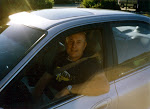Sergeant Pepper’s Lonely (or How the World Learned To Stop Worrying and to Love The Bomb.)
On February 25th, 1967 an American radio personality up in Seattle on managed to get a hold of Beatle George Harrison on the trans-atlantic telephone (it was his 24th birthday). He broadcast the conversation with George live on the air. During the conversation George said that they were back in the studio working on a new album. He went on to enthusiastically describe a new song that the Beatles had just completed only two days earlier, titled A Day in the Life. Finally, George played the song live from Britain over the long distance telephone wires for the benefit of the unbelievably lucky Seattle radio audience that was tuned into radio station KJR that afternoon.
The disc jockey was as stunned and speechless as the listening audience. The detonation countdown on the Beatle doomsday device was now initiated and the coming super nova was now unstoppable
The buzz began to spread everywhere that something absolutely brilliant and wonderful, a once in a life time cultural event was about to explode on our watch. Radio stations started speculating about the coming Beatles album describing it in mythical proportions months before it was released.
 And that spring of 1967, the rivets that held together the structural vestiges of the cultural establishment, some that had successfully withstood the 1964 onslaught of Beatle mania, began to pop off. A catastrophic failure of the establishment was imminent.
And in London, a home grown psychedelic sub-culture was mushrooming and overtaking the British Empire and western Europe. In addition to the Beatles, it featured an up and coming band named The Pink Floyd and an American born phenomenon named Jimi Hendrix who was exploding across the island nation and set to sweep over the entire planet.
 Across the world, radio stations put the LP onto the turntable and let it play without interruption except to occasionally break in with “oh my God!!!” followed by their attempts to try and describe the cover to the listening audience or to even grasp the cultural significance of the event.
 Sergeant Pepper’s One And Only Lonely Hearts Club Band has left the building And thus was unleashed a second 1960’s revolution uprooting and toppling cultural institutions both great and small. It is hard to over state the sudden, immediate, and irreversible effect that the release of Sergeant Pepper’s Lonely Hearts Club Band had on mass consciousness that golden and idyllic summer of love. It was art of the highest order
A bit of documentary on the making of this masterpiece.
|






















6 comments:
Have you heard about Starbucks promoting Paul McCarney's new album, and by extension, introducing a whole new generation to the Beatles? That can only be a good thing.
A funny note: my youngest sister is 11 years my junior. Back in the late seventies, when she was 9 or so, I asked her if she knew who the Beatles were. Her reply? "yeah, that was Paul McCartney's first band, right?"
Too funny!
Very funny!
You can hear three of Paul's songs off his new CD by clicking the Jukebox on this weeks soup. Stunning masterwork!
This post represents two pages from a book that I am writing done up as a blog post just to see what the frick it would look like. Check out the many audio embeds.
Excellent tribute! Hope you don't mind if I added a link to this on my post.
Beth, I am honored! Cheers
The year of high school graduation. Yet, only the beginning.
The Beatles conquering new ground previously unexplored. How could it get any better? I mean an LP to listen to from eginning to end? Not just two hits, and fillers.
It was a new, symphonic landmark for rock history. It paved the way for FM 'underground' stations to feature these LPs in their entirety.
Another group had a hit on the charts. The song was 'Go Now' which was less than spectacular but, better than many. This group made a career of producing musical masterpieces on LPs shortly thereafter. You knew when buying an LP by, the Moody Blues you were in for a musical experience.
Got to see the Moody Blues in concert a few years ago in Boise. They were expectedly incredible!
It was, however Sgt. Pepper leading us through the dawning of the age of aquarius.
Thanks for re-awakening some great memories tucked away for safekeeping!
Post a Comment